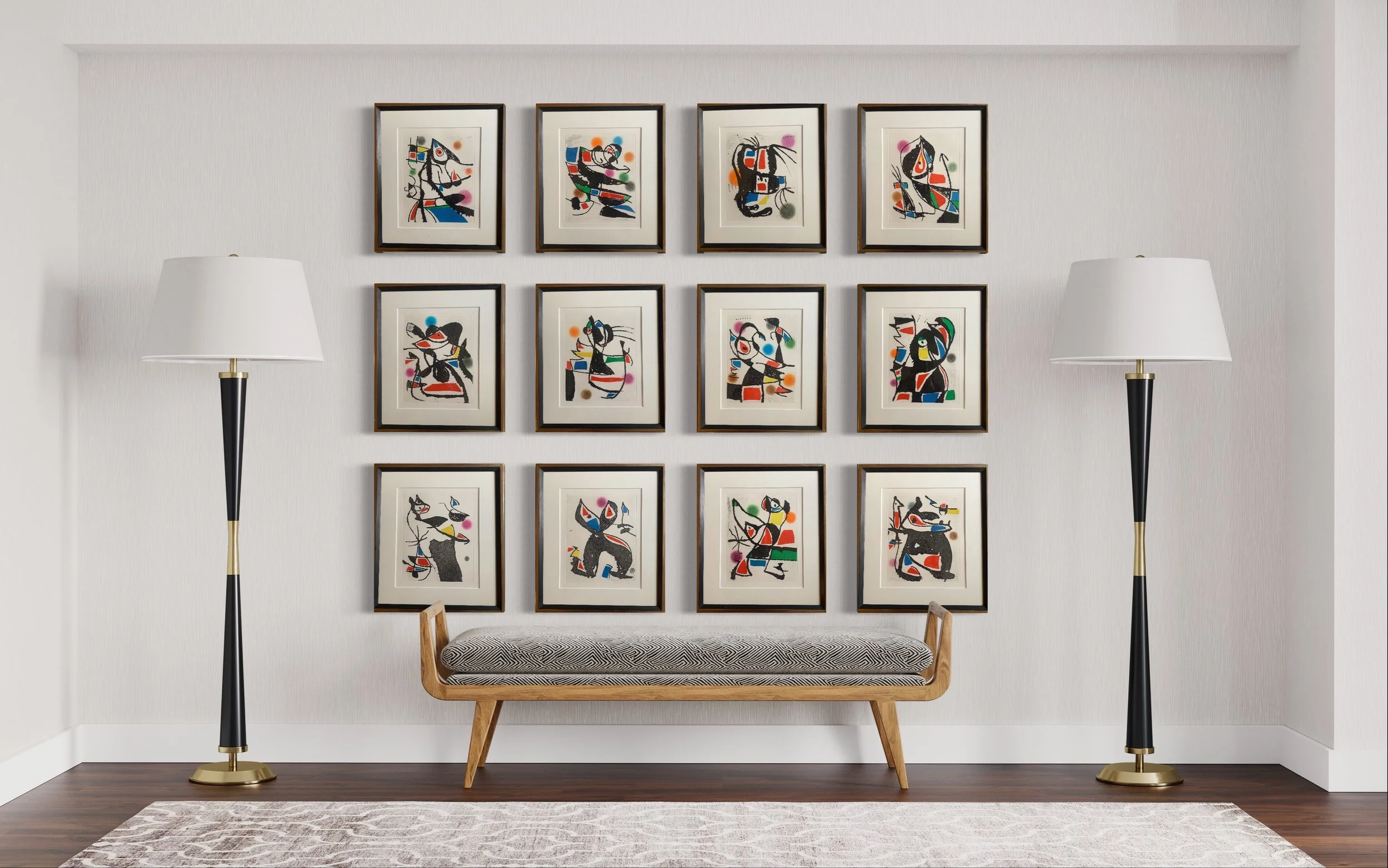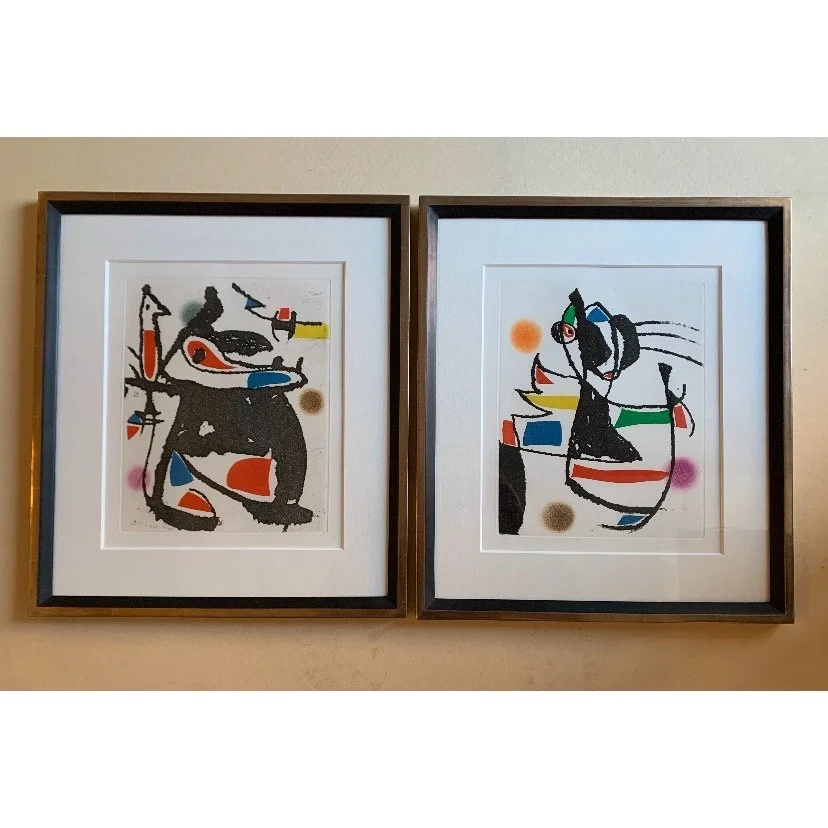Joan Miro 'Le Marteau Sans Maitre' 1976
Joan Miro
‘Le Marteau sans Maitre’ 1976
Complete folio Number 9 of 25 HC proofs. Signed and numbered in pencil.
Etching and aquatints in colours
Framed: By Ramsay hand gilded with black painted inner
Dimensions: 47cm height x 41cm width
Joan Miro 1893-1983 a Catalan artist.
As seen in this series his artworks were innovative, experimental and playful informing and inspiring the work of his Surrealist contemporaries, Alexander Calder, Salvador Dali to name a few.
Miro’s family urged him to have a career in finance so from the age of 14 he studied business and later became an accounting clerk. Unsurprisingly he did not enjoy it at all and after suffering a break down and rather harsh spell of typhoid he closed the book on his accounting life. In 1912 he officially started his artistic career enrolling in Gali’s Escola d’Art, Barcelona.
He was given his first solo show in 1918 in Barcelona, it was a disaster, nothing sold and critics and the public panned it later forcing him to leave Barcelona for Paris in 1920. In Paris Miro ignored the critics and in 1925 sold what he believed to be his first masterpiece ‘The Farm’ to writer Ernest Hemingway. It celebrated his Catalan heritage.
Known to have said ‘I want to assassinate painting’ from 1925 Miro experimented with different materials and mediums and found a particular dislike for Cubism. From 1944 Miro was experimenting with ceramics, sculptures, murals, lithography, etching and printing. He kept experimenting, pushing boundaries and in 1974 he was commissioned to create an enormous tapestry for the lobby of the S.Terminal of the World Trade Centre in New York.
It was after WWII that Miro’s fame went stratospheric, cementing his status as one of the most important and influential artists of the 20th Century. He created a ceramic mural for UNESCO building in Paris and was later awarded The Guggenheim International Award in 1958. Also awarded the Grand Prize for Graphic work at The Venice Biennale in 1954.
Miro was and still is immensely important in the development of abstract expressionism having an enormous influence on Mark Rothko, Jackson Pollock, Arshile Gorky and many many more artists we see today.
In 2012 a Miro ‘ Etoile Bleue’ sold for more than £23.5 million setting a new record for Miro.
Miro worked until he was 90 and was married to his wife Juncosa for 50 of those years having one daughter Maria. Surprisingly his personality was very much the opposite of his work as was his dress sense - he would always be seen in a dark almost black business suit and his life was full of discipline and order.



Joan Miro 'Le Marteau sans Maitre' 1976.

Joan Miro 'Le Marteau sans Maitre' 1976.

Joan Miro 'Le Marteau sans Maitre' 1976.

Joan Miro 'Le Marteau sans Maitre' 1976.

Joan Miro 'Le Marteau sans Maitre' 1976.

Joan Miro 'Le Marteau sans Maitre' 1976.

Joan Miro 'Le Marteau sans Maitre' 1976.

Joan Miro 'Le Marteau sans Maitre' 1976.
